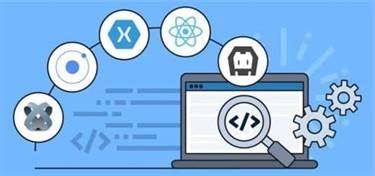7 Phases of the System Development Life Cycle
In this step, you incorporate more specific data for your new system. This includes the first system prototype drafts, market research, and an evaluation of competitors. It acts as the foundation of the whole SDLC scheme and paves the way for the successful execution of upcoming steps and, ultimately, a successful project launch. The profession of software developer has existed since the first computers and their operators, as far back as ENIAC and vacuum tubes. As the disclipine has matured, practices and methods for developing software have evolved. Once the themes have been identified then there are predetermined tasks and techniques to finish the project as defined by the approved methodology of the organization.

Several pitfalls can turn an SDLC implementation into more of a roadblock to development than a tool that helps us. Failure to take into account the needs of customers and all users and stakeholders can result in a poor understanding of the system requirements at the outset. ALM includes the entire lifecycle of the application and continues beyond SDLC.
System Development Life Cycle
The final phase of the SDLC is to measure the effectiveness phases of systems development life cycle of the system and evaluate potential enhancements.
- Relevant questions include whether the newly implemented system meets requirements and achieves project goals, whether the system is usable, reliable/available, properly scaled and fault-tolerant.
- The development team combines automation and manual testing to check the software for bugs.
- Developers create a version very quickly and for relatively little cost, then test and improve it through rapid and successive versions.
- Several variants of Agile have emerged since the signing of the Manifesto.
- The big step is creating a detailed project plan document and work breakdown structure that outlines the requirements.
- The team members are assigned and the activities needed to build the software are defined (e.g., gather requirements, interview clients, conduct smoke tests, etc.).
Prototyping tools, which now offer extensive automation and AI features, significantly streamline this stage. They are used for the fast creation of multiple early-stage working prototypes, which can then be evaluated. AI monitoring tools ensure that best practices are rigorously adhered to. As a rule, these features help to finalize the SRS document as well as create the first prototype of the software to get the overall idea of how it should look like. Requirements are collected and the overall objective is identified during this phase.
Software development
They tend to occur in this order, though some processes combine or execute them in parallel. The security issues for a development must be identified by a formal risk analysis. Any Forensic Laboratory employee that is involved in software development shall have the appropriate training, experience, and qualifications for the required development work. These standards should be used within the context of the Forensic Laboratory’s Secure System Development Life Cycle.

As the SDLC is a repetitive methodology, you have to ensure code quality at every cycle. Many organizations tend to spend few efforts on testing while a stronger focus on testing can save them a lot of rework, time, and money. In the design phase, software engineers analyze requirements and identify the best solutions to create the software. For example, they may consider integrating pre-existing modules, make technology choices, and identify development tools. They will look at how to best integrate the new software into any existing IT infrastructure the organization may have.
Dedicated Development Team vs. In-House Development: Pros and Cons
The Waterfall model is one of the oldest SDLC models, known for its basic and classical structure. Each phase must be completed before moving onto the next, which prohibits overlapping. After successfully building the software, the team coordinates with the product manager to deploy the software to production. The SDLC comprises seven phases (stages or steps) whose names and numbers differ from company to company and book to book. Corporations use the SDLC to define, build, and maintain software products. It is a detailed process that creates a comprehensive outline for the engineers’ workflow.

In the fifth phase, systems integration and testing are carried out by Quality Assurance (QA) professionals. They will be responsible for determining if the proposed design reaches the initial business goals set by the company. It’s possible for testing to be repeated, specifically to check for bugs, interoperability, and errors. In the first phase, the team determines whether or not there’s a need for a new system to reach the strategic objectives of a business. This is a feasibility study or preliminary plan for the company to acquire any resources necessary to improve a service or build on specific infrastructure.
Popular SDLC models
For example, the waterfall model works best for projects where your team has no or limited access to customers to provide constant feedback. However, the Agile model’s flexibility is preferred for complex projects with constantly changing requirements. Developers are now responsible for more and more steps of the entire development process. It then creates the software through the stages of analysis, planning, design, development, testing, and deployment. By anticipating costly mistakes like failing to ask the end-user or client for feedback, SLDC can eliminate redundant rework and after-the-fact fixes.

When teams have clarity into the work getting done, there’s no telling how much more they can accomplish in the same amount of time. The Smartsheet platform makes it easy to plan, capture, manage, and report on work from anywhere, helping your team be more effective and get more done. Report on key metrics and get real-time visibility into work as it happens with roll-up reports, dashboards, and automated workflows built to keep your team connected and informed. Empower your people to go above and beyond with a flexible platform designed to match the needs of your team — and adapt as those needs change. Conduct with a preliminary analysis, consider alternative solutions, estimate costs and benefits, and submit a preliminary plan with recommendations.
How does SDLC address security?
The term software development lifecycle (SDLC) is frequently used in technology to refer to the entire process of technology innovation and support. Rapid development cycles help teams identify and address issues in complex projects early on and before they become significant problems. They can also engage customers and stakeholders to obtain feedback throughout the project lifecycle. However, overreliance on customer feedback could lead to excessive scope changes or end the project midway.
Despite that fact, Waterfall became a very common, even standard methodology for large projects around the world. Regardless of methodology, the aim is for development teams to produce working software as quickly as possible. Business stakeholders should be engaged regularly, to ensure that their expectations are being met. The NIST SDLC integrates risk management activities through the application of the NIST RMF. Ultimately, any development team in both the IT and other industries can benefit from implementing system development life cycles into their projects. Use the above guide to identify which methodology you want to use in conjunction with your SDLC for the best results.
How to become a software developer
The biggest difference between the lean methodology and the other methodologies is that the system’s full set of requirements is unknown when the project is launched. As each iteration of the project is released, the statistics and feedback gathered are used to determine the requirements. The lean methodology works best in an entrepreneurial environment where a company is interested in determining if their idea for a software application is worth developing. One of the upsides to this model is that developers can create a working version of the project relatively early in their development life cycle, so implement the changes are often less expensive. Each stage has a separate project plan and takes information from the previous stage to avoid similar issues (if encountered).
